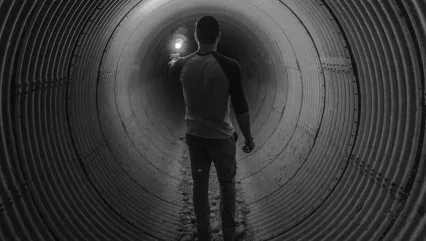
Take tunnelling. As an industry, we’ve discovered how to shorten routes and construction times. We’ve figured out how to efficiently and effectively move people and products from point A to point B, and how to deliver water where it’s most needed and retain or divert it when water quality or public safety is threatened.
Without sharp focus spanning many years, the tunnelling industry wouldn’t have developed and honed the ability to tunnel through soil and hard rock with minimal surface disruption and inconvenience. Concentration and perseverance has paid off through the development and implementation of tunnelling techniques only imagined by our predecessors.
But what are we missing by looking mostly within our own industry for answers and primarily touting tunnelling benefits among ourselves? The tunnelling industry would benefit tremendously by being less introspective. We need to be more attuned to learning from other industries and sectors in general. And we really need to communicate the benefits of tunnelling not only among ourselves and in tunnelling journals but also through more news and social media channels to those who make ultimate infrastructure implementation and funding decisions. Improved communication with public leaders about the social, economic, and environmental benefits of tunnelling would reduce surface solutions.
Tunnelling is an inherently sustainable approach. Because the majority of construction takes place deep underground, there are fewer disturbances and delays to the local community when compared with open-cut construction methods. This keeps commute times short and local businesses thriving. Tunnels also provide flexibility for future development or redevelopment above ground. Within the water industry, use of deep tunnels requires less energy consumption than other conveyance methods because tunnels often are built with a storage component and to enable gravity to pull water across long distances to a central treatment facility. What’s more, maintenance expenses are minimal compared with conventional sewer technology.
Of course we’re preaching to the choir. Although specific technology and industry calls to action like this commentary are best directed to readers of professional organisation and trade publications like this one, communicating the advantages associated with tunnelling through traditional news as well as emerging social media platforms will yield greater returns. More widespread understanding and public acceptance will ultimately lead to more community support and public funding.
In our work, the tunnelling industry intersects with the water industry. Varied science and engineering expertise is necessary to engineer and construct underground facilities to store and move water. Delivery of safe drinking water, conveying wastewater to treatment facilities for resource recovery and reuse, and development of underground interceptors to help reduce CSOs into local waterways already rely on tunnelling as an important water management strategy. Now it’s time for these and other industries to realise how much there is to learn from each other as well as how much they can continue to learn together.
For example, the tunnelling industry can learn a lot about communicating value from the water industry. Over the past decade, the US water industry has increasingly explored and extolled the importance of communicating the value of water to the public. What began as a water utility concern about inability to pay for essential infrastructure repairs and improvements, because so much of the populace believes water should be free and public leaders are reticent to support rate increases, has evolved into an industry-wide goal to increase understanding and alter perceptions. A project jointly funded by the Water Research Foundation (formerly the Awwa Water Research Foundation) and the U.S. Environmental Protection Agency culminated in published guidance for water utilities (http://www.waterrf. org/PublicReportLibrary/91222.pdf) that addresses such topics as newspaper interviews and focus groups with elected and appointed officials. Formation of the Value of Water Coalition additionally exemplifies how the water industry came together for a common cause; the coalition unites public and private water agencies, business and community leaders, and national organisations in the crusade to elevate the importance of water to the economic, environmental, and social wellbeing of America.
Today advice abounds about how to explain and communicate the value added by engineered water systems and why rate increases are necessary, and water utilities have made significant strides to get the word out. The water industry has a long way to go but has embraced the idea of communicating far and wide outside the confines of the industry. Many of the same overall needs and principles, if not precise messages, apply to the tunnelling industry, and we are fortunate to have the opportunity to leapfrog over the initial portion of the learning curve already established by the water industry. We’ve already adopted a global lens, so we have a world of other resources beyond our borders to draw from as well.
There’s no limit to what the industry can accomplish if we not only continue to dig deep but also widen our perspective. Let’s keep discussion about how to become more externally focused at the top of the agenda for our industry association meetings and high on the list of important paper topics at our conferences.
David Egger, P.E., is a senior vice president and managing director of Heavy Civil and Chris Mueller P.E., PhD, is an associate vice president and regional practice manager for Heavy Civil as well as program and construction management with Black & Veatch Corporation.






